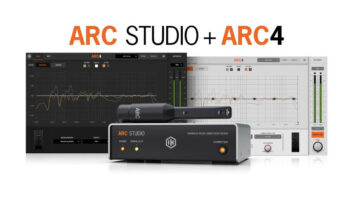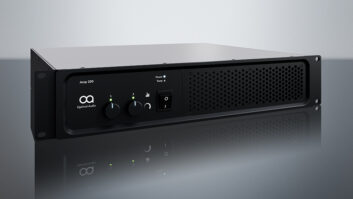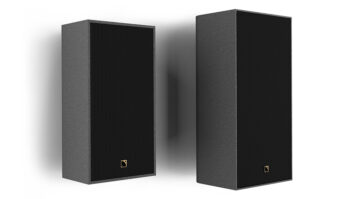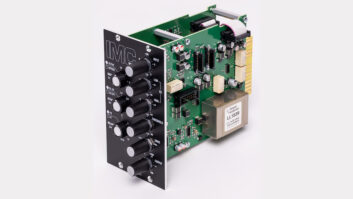All of the new ARCs use RS-485 control protocol and are easily programmed to work with any SymNet or SymNet Express hardware. All control assignments are made within the SymNet Designer (Windows-only) and stored locally on each ARC. Almost any parameter in a system design can be accessed via these remote controls.
All of the controls are mounted on Decora-style inserts in single (ARC-SW4, ARC-K1) or dual-gang (ARC-MIC, ARC-SWK) form factors, increasing flexibility when integrating ARC units into the total control scheme of a room or venue.
ARC-SW4 comprises four latching buttons, each with a bi-color LED indicating its status. Users can select from up to four sources or call up combinations in room-combining scenarios. It could also be used to call up four presets that could subtly or dramatically change the sound in the room.
ARC-K1 is a single rotary encoder with a multicolored LED stack providing user feedback on the position of the control. This will most often be used as a volume control for background music, overall system level, etc.
ARC-SWK combines these controls in a dual-gang format to provide linked volume control in room-combining situations.
The dual-gang ARC-MIC is intended as a remote paging station for SymNet. It takes advantage of audio capability to be added to the Cat-5 cable also carrying power and control to the ARCs from the SymNet system. A single channel of balanced analog audio is sent over the wire to the system from the ARC-MIC. The mounted push-to-talk switch and XLR input on one Decora allow for direct connection of a microphone to SymNet from a remote location. The ARC-SW4 on the companion Decora selects paging zones.
All of the new ARCs will be compatible with the ARC-PS remote power supply device. This unit is required for systems in which ARCs are used with legacy SymNet hardware and local powering of ARCs is impractical. The new SymNet Express units have an ARC port on the rear panel and will power a small number of ARCs directly.
“We’ve spent a great deal of effort making the DSP side of our SymNet family as complete, flexible and powerful as possible,” said Symetrix director of sales Jim Latimer. “Now, it’s time to harness that DSP power and make it very simple for the end-user to control one of our systems. After all, it is the end-user who ends up living with the system, so we want them to have the best experience possible.”
For more information, click here.
In other company news, Symetrix has upgraded its SymNet Series with the 5.0 Version of its SymNet Designer (Windows-only). This upgrade offers new software features and includes support for the new SymNet Express hardware series. A June 2004 release is anticipated.
Under-5.0 hardware units will now return to last state when the power is cycled on and off. In addition, portions of the software code have been rewritten to optimize certain processes and to take advantage of the more efficient 100MHz SHARC processors used in the new Express hardware. An Auto Firmware Upgrade function has also been added to simplify the process of upgrading hardware sites from previous software versions.
SymNet has been a licensee of Peak Audio’s CobraNet protocol for years and the 5.0 release supports new developments in that realm such as 24-bit mode and lower latency transmission. Latency can be set in the Designer software to values as low as 1.3 ms.
New processing modules include a “British EQ” with 40Hz rumble filter, high and low shelving, and 4-band parametric filters on one screen. Also, new stereo input/output mixers and stereo input/output matrix mixers are included. These mixers use a single fader to control a stereo pair of audio channels. This increases the number of virtual mixers in SymNet Designer, not including the Automixers, to 64. New 32-input versions of gain and VCA modules are also included.
Complete support is being added for the CM Labs Motor Mix control surface. This 8-channel MIDI device provides eight 100mm faders and a number of rotary and button controls. These are all assigned in SymNet Designer to control various processing objects including mixers, compressors, etc., for real-time control of the audio with a familiar, tactile interface.
For more information, click here. For more new sound reinforcement products, visit mixonline.com/live_sound_products/.





